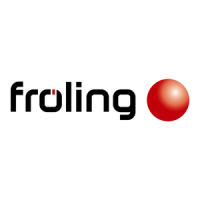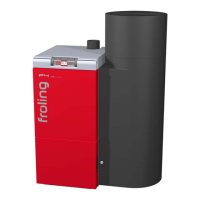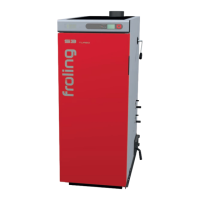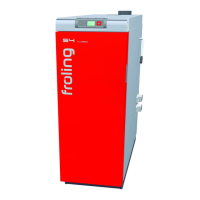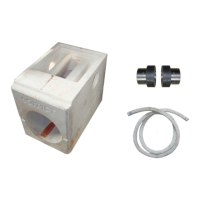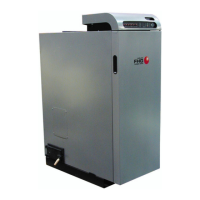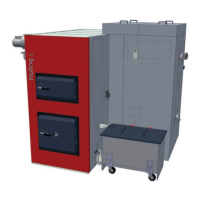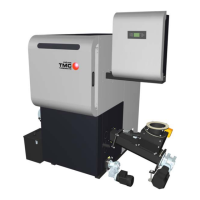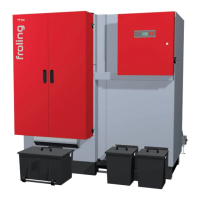Fröling Heizkessel- und Behälterbau Ges.m.b.H, Industriestrasse 12, A-4710 Grieskirchen Page 17
Tel +43 (0) 7248 606-0 Fax +43 (0) 7248 606-600 info@froeling.com www.froeling.com B0430207
2.3.5 Combination with storage tank
We recommend that you use the pellet boiler with a storage tank, as this
allows you to achieve a reduction in start-up and shut downs within the ideal
performance range of the boiler.
Please contact your installer or a Fröling technician directly for the right
measurements of the storage tank.
If your P4 Pellet boiler has been installed with a Thermal Storage
System, this system may require periodic maintenance. Please review
the periodic maintenance requirements of your thermal storage system
with your installer.
2.3.6 Chimney connection / chimney system
The chimney is one of the most critical factors in the successful
operation of any solid fuel heater, including the Fröling P4 boiler. A good
chimney will provide a continuous and dependable draft to pull the
exhaust gasses out of the building. The entire flue gas system must be
designed to prevent, wherever possible, damage caused by seepage,
insufficient feed pressure and condensation. Follow manufacturer’s
installation instructions for installing and supporting any specific
chimney product.
The boiler must be connected to a tile-lined masonry chimney or to a factory-
built Type UL 103 HT (ULC S629 in Canada) approved chimney. The chimney
must be in good condition. If the boiler is connected to a dirty or inadequate
chimney, it can present a serious fire hazard. All chimneys and connections
must conform to NFPA standard #211. No other appliance should be
connected to this flue unless allowed by the local code authority. Consult your
local inspector for chimney requirements and install the boiler in accordance
with all applicable codes.
Flue gas exhaust temperatures can be low enough to cause
condensation in chimneys. Condensation will, over time, damage a
masonry chimney. Accordingly, installation of a stainless chimney liner
(made with 304, 316, or 321) inside the chimney flue is strongly
recommended.
The flue gas temperatures (when cleaned) and the additional flue gas
values can be found in the technical specification sheets (See chart
below “see chart below “Boiler data for constructing the flue gas
system”.
The smoke pipe connecting the boiler to the chimney flue must be black
or stainless, have a minimum thickness of 24 gauge, and rise a
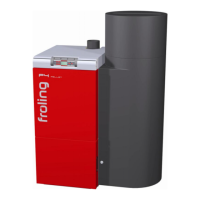
